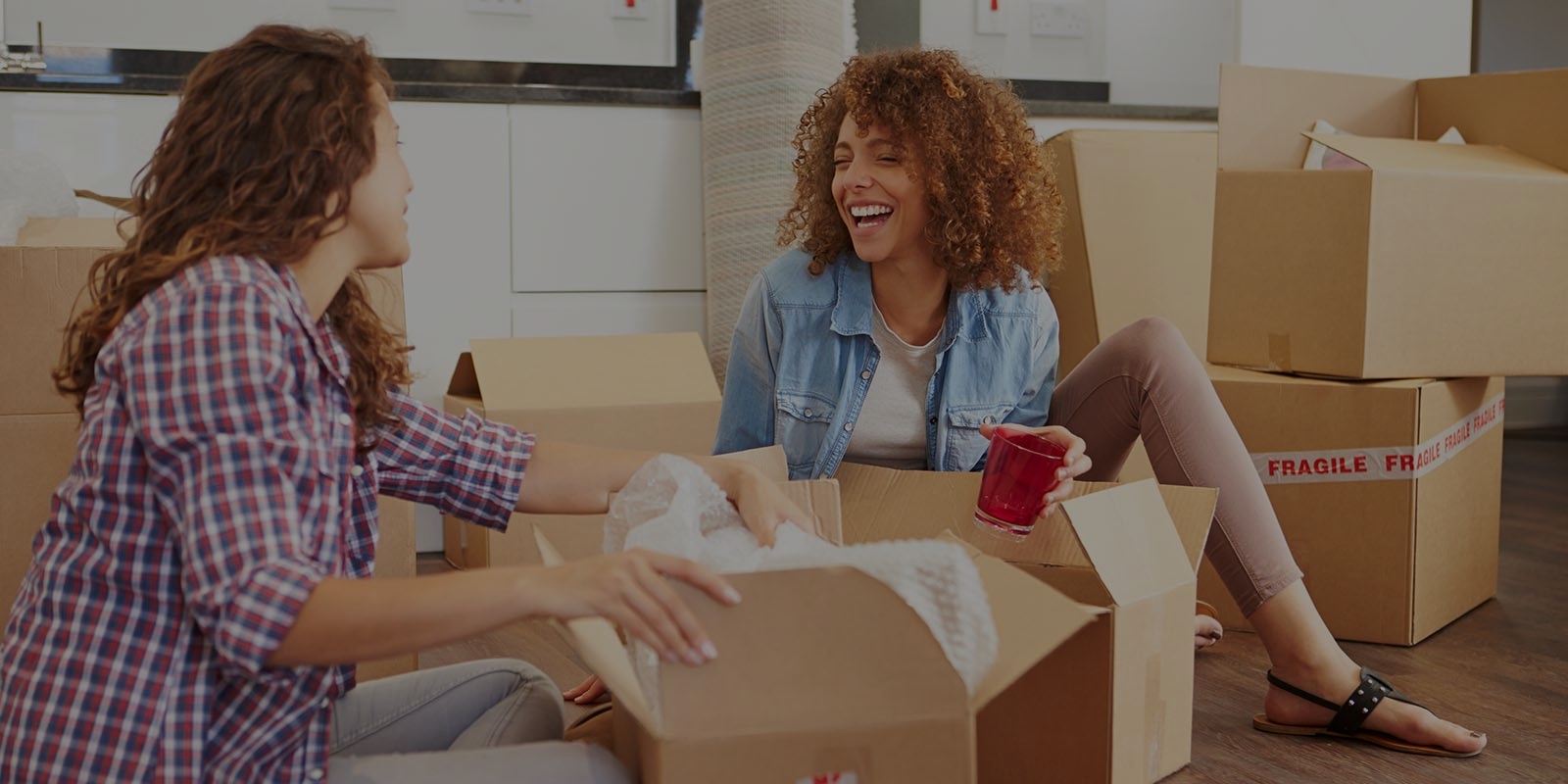Efficient Techniques for Packing When Relocating
Posted on 22/06/2025
Efficient Techniques for Packing When Relocating: The Ultimate Guide
Relocating to a new home is an exciting adventure, but it often comes with the stress of packing. Fortunately, implementing efficient packing techniques can make the process smooth, organized, and even enjoyable. Whether you're moving locally or across the country, this comprehensive guide explores the most effective packing strategies for moving to ensure your belongings stay safe, your move stays on schedule, and your sanity remains intact.

Why Efficient Packing Matters
Packing efficiently when relocating is more than just saving time. Smart packing helps you avoid damage, reduce moving expenses, and simplify both loading and unpacking. Efficient packing transforms a potentially chaotic move into a seamless experience, ensuring you settle into your new home with ease and minimal hassle.
- Reduces stress by keeping you organized
- Protects belongings from damage
- Saves time and money during the move
- Makes unpacking easier at your destination
Step-by-Step Efficient Packing Techniques for Relocating
1. Start With Planning and Preparation
Every effective relocation begins with a solid packing plan. Dedicate time to outline your approach before you pack a single box.
- Create a Packing Timeline: Begin 4-6 weeks before your moving date. Break tasks into manageable daily or weekly goals.
- Declutter: Clean out unnecessary items--donate, recycle, or discard what you no longer need. This reduces packing time and the overall volume to move.
- Take Inventory: List valuable and essential items. Snap photos for insurance purposes and organize important documents.
- Gather Supplies: Secure boxes in various sizes, packing tape, bubble wrap, packing paper, markers, and specialty containers as needed.
2. Choose the Right Packing Materials
The quality of your packing supplies greatly impacts the safety and efficiency of your move. Investing in sturdy boxes and protective materials is vital.
- New, Sturdy Boxes: Old boxes may collapse or split. Use new or gently used boxes and reinforce bottoms with tape.
- Protective Wraps: Bubble wrap, packing paper, and foam peanuts protect fragile items.
- Specialty Containers: Wardrobe boxes, dish packs, and mattress bags offer added protection for specific items.
- Labeling Supplies: Markers, colored stickers, and tape to organize boxes by room and fragility.
3. Use a Room-By-Room Packing System
Packing one room at a time is among the most efficient relocation packing techniques. This minimizes confusion and streamlines both the loading and unpacking processes.
- Start with Low-Use Rooms: Pack rarely used rooms (like guest rooms or storage areas) first.
- Pack Essential Rooms Last: Kitchen, bathrooms, and bedrooms should be packed closer to moving day.
- Keep Items from Each Room Together: This makes setting up your new home quick and straightforward.
4. Label Everything Clearly and Consistently
An organized labeling system is crucial. Efficient packing for moving means each box is properly identified:
- Room Name: Clearly mark each box with its destination room.
- Contents: List key items in the box. Avoid vague labels like 'Miscellaneous'.
- Priority Level: Note if the box contains essentials or is a high priority for unpacking. Use colored tape or stickers for quick identification.
- Fragile Items: Mark "fragile" on all sides of boxes with breakables.
5. Optimize Box Packing Techniques
-
Heavy Items on Bottom, Light Items on Top:
Place heavier items at the bottom of boxes and lighter items above to prevent crushing and keep boxes stable during transport. -
Fill Gaps:
Use towels, clothing, or packing papers to fill voids in boxes, which prevents shifting and protects contents. -
Don't Overpack:
Boxes that are too heavy increase the risk of injury and damage. *Ideal weight*: Keep most boxes under 50 pounds. -
Bundle and Wrap:
Bundle cords, wrap breakables individually, and keep similar items together for easier unpacking.
6. Pack Clothes and Linens Efficiently
- Wardrobe Boxes: For hanging clothes, wardrobe boxes keep items wrinkle-free and easily accessible.
- Suitcases: Maximize your luggage by packing clothes, shoes, or even books.
- Vacuum Storage Bags: Compress bulky bedding, towels, and off-season clothing to save space.
- Layering: Use soft items like t-shirts or towels to protect fragile pieces packed within the same box.
7. Protect Breakables and Valuables
Fragile items such as glassware, electronics, and art require extra care:
-
Wrap Items Individually:
Use bubble wrap or packing paper for each piece. -
Double Box Fragile Items:
Place items in a smaller box with padding, then into a larger box with more padding. -
Label as Fragile:
Ensure every side of the box indicates its fragile contents. -
Electronics:
If possible, use original boxes and packing materials. Take photos of setup beforehand to help with reassembly.
8. Prioritize an Essentials Box (Open-First Box)
Packing an essentials box ensures you have everything you need for the first day and night at your new place. Tips for a well-stocked essentials box:
- Toiletries: soap, toothbrush, toothpaste, toilet paper
- Charger(s) for phones and laptops
- Basic kitchenware: kettle, mug, one set of cutlery
- Change of clothes, medications, important documents
- Bedding, towels, and first-aid kit
9. Use Technology to Stay Organized
Take advantage of tech solutions to maintain order:
- Inventory Apps: Apps like Sortly or Moving Van help track items and assign them to boxes.
- Moving Checklists: Digital checklists ensure nothing is overlooked during packing and on moving day.
- Digital Photos: Document electronics setups and the condition of high-value items for insurance purposes.
Pro Tips for Boosting Packing Efficiency During Relocation
-
Purge as You Go:
Avoid packing items you don't need. Streamlining as you pack is the ultimate time and energy saver. -
Recruit Help Wisely:
Assign tasks to family or friends based on their strengths. Label, wrap, break down furniture, or move boxes--it's faster together. -
Disassemble Furniture In Advance:
Take apart larger items ahead of time. Keep screws and small parts in labeled bags, taped to furniture pieces. -
Don't Forget Utilities:
Schedule shut-off and activation dates to ensure a smooth transition in your new home. -
Maintain a Positive Attitude:
Take breaks, stay hydrated, and maintain a sense of humor--an efficient move has a lot to do with mindset!
Avoiding Common Packing Mistakes When Moving
-
Leaving Packing Until the Last Minute:
Last-minute panic leads to broken items, misplaced essentials, and increased stress levels. -
Using Poor-Quality Boxes:
Flimsy boxes collapse under weight and put your belongings at risk. -
Ignoring Labels:
Unlabeled boxes turn unpacking into a guessing game. -
Packing Items From Multiple Rooms Together:
Mixing belongings creates chaos at your new home. -
Overloading Boxes:
Injuries and damage are more likely with heavy, over-packed boxes.
Sustainable and Eco-Friendly Packing Tips
Moving doesn't have to be wasteful. Here are some green packing techniques for relocating:
-
Reuse Boxes and Materials:
Check local marketplaces, friends, or supermarkets for gently used boxes. -
Use What You Have:
Pack items in suitcases, laundry baskets, and storage bins. -
Swap Bubble Wrap for Linens:
Towels, blankets, and clothes double as protection for breakables. -
Recycle Post-Move:
Break down moving boxes and recycle or offer them to others planning their own relocation.

The Benefits of Hiring Professional Packers
While packing efficiently for relocation can be a DIY triumph, hiring professionals can be an efficient alternative--especially for large households or limited timelines. Some benefits of professional packing services include:
- Speed and Efficiency: Trained packers work quickly and minimize errors.
- Expert Handling: Fragile or high-value items get specialist attention.
- Insurance Coverage: Many companies provide insurance for items they pack themselves.
- Less Stress: Focus on your transition and let the experts handle the details.
Final Thoughts: Mastering Efficient Packing for Relocation Success
Moving doesn't have to be a dreaded task. With these efficient packing strategies for moving, you'll reduce stress, minimize the risk of damaged belongings, and make settling into your new space smoother and quicker. Remember, efficient packing is all about preparation, organization, and clear labeling. Start early, declutter ruthlessly, use high-quality supplies, and consider sustainability for a relocation you can feel good about.
Looking for more tips on moving or organization? Check out our other guides or contact professional moving experts for a successful and stress-free relocation!







